
Jerome de Vente, MD
Associate Medical Director
Clinical Practice Guidelines
for Key Medi-Cal Populations of Focus
©️ 2024 Kaiser Foundation Health Plan, Inc.
CONTRIBUTORS
PRIMARY REVIEWERS
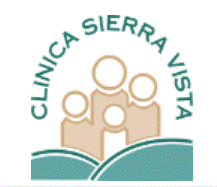
Ferishta Gousse, MD
Associate Medical Director
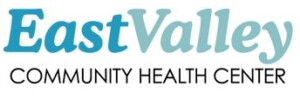
Choanon Ding, MD
Associate Medical Director

Elaine Joe Soriano, MD
Regional Medical Director
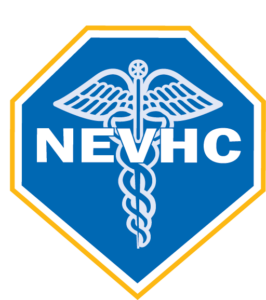
Christine Park, MD, MPH
Chief Medical Officer

Kelvin Vu, DO
Senior Vice President of Clinical Services
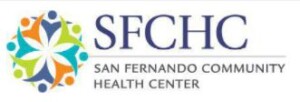
Anastasia Williams, MD
Medical Director, Pediatric Services
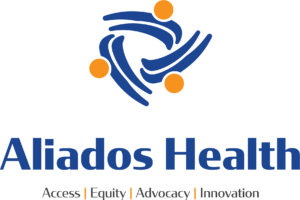
Danielle Oryn, DO, MPH
Chief Medical Informatics Officer

Yohanna Barth-Rogers, MD
Chief Medical Officer

David Luna, MD
Chief Medical Officer

Anjali Mahoney, MD
Chief Medical Officer
SECONDARY REVIEWERS
Alexander Valley Healthcare | Cary Wheeler, DO
Alliance Medical Center | Lisa Ward, MD, MsPH, MS, FAAFP
Anderson Valley Health Center | Cindy Novella, FNP
Asian Pacific Health Care Venture | John Hoh, MD
Community Medical Centers, Inc. | Ben Morrison, MD
Comprehensive Community Health Center | Ara Airapetian, MD
Eisner Health Center | Raymond Perry, MD
Long Valley Health Center | Sharon Paltin, MD
Mendocino Coast Clinics | Lawrence Goldyn, MD
Mendocino Community Health Clinics | Matt Swain, DO
Northeast Valley Health Corporation | Christine Park, MD, MPH
Omni Family Health | Joseph Hayes, DO, MMM
ParkTree Community Health Center | Ngozi Chukwu, MD, MPH
Petaluma Health Center | Danielle Oryn, DO, MPH
Redwood Coast Medical Services | Afsoon Foorohar, DO
Redwoods Rural Health Center, Inc. | Philip Scheel, MD
Saban Community Clinic | Anna Noble, MD
San Fernando Community Health Center | Andre Basmadzhyan, DO
Santa Rosa Community Health | Beth Dadko
Sonoma County Indian Health Project | Mark Goodwin, MD
Sonoma Valley Community Health Center | William Klas, MD
Universal Community Health Center | Jonathan Olumoya, MD
Via Care Community Health Center | Demetrio Cardenas, PA-C
West County Health Centers | Jason Cunningham, DO
PHMI BACKGROUND
The Population Health Management Initiative (PHMI) is a California partnership of the Department of Health Care Services (DHCS), Kaiser Permanente and community health centers (CHCs).
Currently, PHMI serves a cohort of 32 CHCs to implement a robust portfolio of population health management and practice transformation solutions to augment clinical outcomes for 1.1 million patients cared for across eight regions: Humboldt, Kern, Los Angeles, Mendocino, Merced, San Joaquin, Sonoma and Stanislaus counties.
Within these regions, PHMI’s goals are to improve quality metrics and address disparities, improve patient engagement and experience of care, and increase access to primary care services through team-based care in CHCs. PHMI offers collaboratively designed evidence-based models of care where each CHC focuses on shared priority measures and populations, including children, pregnant people, people with behavioral health conditions, adults living with chronic conditions, and adults with preventive care needs.
CLINICAL GUIDELINES ADVISORY GROUP BACKGROUND
California community health centers vary greatly in their approach to utilizing clinical guidelines (CGs), and many do not have a formal process to review, adopt and follow CGs consistently in clinical practice. For those CHCs that do embark on developing and adopting CGs, most do so independently of other CHCs and other healthcare institutions, creating a significant body of work to execute and maintain over time. This often becomes burdensome to support with already stretched CHC clinical staff, resulting in limited ability to consistently utilize CGs over time. In 2022, PHMI conducted a clinical guidelines survey at PHMI CHCs and found:
- 56% of CHCs do not follow a formal process to review, adopt and promote a set of CGs.
- 64% of CHCs do not monitor the use of CGs in assuring that services are provided.
- 65% of CHCs do not incorporate specific CG recommendations into their practice through an electronic medical record or population health management platform.
- 63% of CHC providers individually reference CGs on their own using platforms such as UpToDate.
These findings suggest there is an opportunity to improve the way that CGs are developed and adopted at CHCs and to design an efficient process to develop and update CGs that involves CHCs working together as opposed to individually. The PHMI Clinical Guidelines Advisory Group (CGAG) was established to create a standardized approach to review, adopt and promote established CGs in the PHMI cohort. The CGAG’s approach includes a clinical review and presentation of a selection of current and widely used CGs, including their similarities and key differences, to CHC clinical representatives for discussion and selection. This approach gives CHCs the opportunity to share thoughts and challenges across CHCs and ultimately build consensus for guideline selection. Additionally, Southern California Permanente Medical Group participated in the guideline development process and shared its best practices as an institution that has effectively standardized, adopted and maintained CGs for provider use over many years.
In 2023, following a year of CGAG working together, PHMI conducted a satisfaction survey with the primary reviewers and found:
- 90% of respondents agreed that the clinical guideline recommendations align with the clinical priorities faced by their CHC.
- 100% of reviewers want to continue to participate in this process for recommendations of additional clinical guidelines.
- 70% of respondents were satisfied with the review process for recommending clinical guidelines.
- 67% of respondents are confident that their health center can adopt and implement the recommended clinical guidelines.
PHMI CG Implications
PHMI is supporting CHCs in using selected CGs to guide care. This may include operationalizing key workflows, standardized protocols and standing orders; embedding links to CGs in the electronic health record (EHR); incorporating recommendations as notifications or alerts in the EHR; and building the capacity to evaluate their effectiveness.
CGAG Focus Areas
The clinical guideline recommendations selected by the CGAG were guided by the populations of focus and clinical conditions that are the focus of PHMI. The initial set of recommendations aligns with the Healthcare Effectiveness Data and Information Set (HEDIS) measures that are the focus of PHMI, many of which are identified as Alternative Payment Methodology (APM) pilot metrics for CHCs in California. These populations and associated CGs are in the following areas:
- Children: Well-Child Visits in the First 30 Months of Life (First 15 Months) (W30).
- Children: Child and Adolescent Well Visits (W30, WCV).
- Children: Immunization for Adolescents (IMA).
- Pregnant People: Prenatal and Postpartum Care (Prenatal and Postpartum) (PPC).
- Pregnant People: Prenatal Depression Screening and Follow-Up (PND-E).
- Pregnant People: Postpartum Depression Screening and Follow-Up (PDS-E).
- Adults with Preventive Care Needs: Breast Cancer Screening (BCS).
- Adults with Preventive Care Needs: Cervical Cancer Screening (CCS).
- Adults with Preventive Care Needs: Colorectal Cancer Screening (COL, COL-E).
- Adults Living with Chronic Conditions: Controlling Blood Pressure (CBP).
- Adults Living with Chronic Conditions: Hemoglobin A1c Control for Patients with Diabetes (Poor Control >9%) (HBD).
- People with Behavioral Health Conditions: Depression Screening and Follow-Up for Adolescents and Adults (DSF).
- People with Behavioral Health Conditions: Depression Remission or Response for Adolescents and Adults (DRR).
CGAG Composition and Process
The CGAG is composed of clinical leadership representation from each of the 32 CHCs participating in PHMI. Eleven CHC clinical representatives were selected to serve in a primary reviewer role. All other CHCs in the cohort identified a clinician representative to serve as a secondary reviewer. Primary reviewers were responsible for reaching consensus to recommend a set of CG recommendations by participating in monthly meetings and interim work. This process included identifying current established CGs, including national guidelines from U. S. Preventive Services Task Force (USPSTF), medical specialties and specialty societies (e.g., American College of Obstetrics and Gynecology, American Diabetes Association, and American Academy of Pediatrics (AAP)/Bright Futures), and Kaiser Permanente National Guideline Program.1 The CGAG considered the range of guidelines for each population and condition and engaged in discussion to recommend final CG recommendations for adoption.
For each clinical guideline, the primary reviewers discussed the various guideline elements and prioritized which elements to focus on during this first round of CG selection. For example, for controlling blood pressure, guideline statements for blood pressure screening and definition were reviewed and selected, but guidelines for uncontrolled blood pressure despite guideline-concordant care were not reviewed. Through this process CHCs determined that, in addition to reaching consensus on specific guideline recommendations, individual CHCs could provide a more rigorous standard of care. For example, a CHC could choose to provide more frequent prenatal visits beyond the requirements of the prenatal and postpartum care clinical guidelines.
After reaching consensus among the primary reviewers, CG recommendations were shared with the secondary reviewers. Secondary reviewers voted to endorse or not endorse the selected guideline recommendations with the goal of reaching a majority decision. For specific concerns raised among primary or secondary reviewers, webinars and individual conversations were used to gain insight and reach the final endorsement status.
All CG recommendations represented in this document were supported by a consensus among primary reviewers and a majority across secondary reviewers and are intended to present a consensus standard for adoption by the PHMI cohort. Guidelines are designed to serve as an evidence-based guide for clinical evaluation and treatment of patients; they are not intended to replace a clinician’s judgment for an individual patient. Clinical judgment and shared decision-making with the patient may merit deviation from a guideline recommendation with respect to individual patient care.
RECOMMENDED CLINICAL GUIDELINES SUMMARY
PHMI Population |
Related HEDIS Measure |
CGAG Supported Recommendations |
Source |
|---|---|---|---|
Children |
Well Child Visits in the First 30 Months of Life (First 15 Months) |
Conduct well child visits as a newborn, at three to five days old, by one month, and then at two, four, six, nine, 12 and 15 months. |
|
Child and Adolescent Well Visits |
Conduct annual well child visits for persons three to 21 years of age. |
||
Immunizations for Adolescents |
|
||
Pregnant People |
Prenatal and Postpartum Care (Prenatal) |
Ensure a prenatal care visit occurs 280 to 176 days prior to delivery (or estimated delivery date (EDD)) for pregnant persons. |
National Committee for Quality Assurance (NCQA) Healthcare Effectiveness Data and Information Set (HEDIS) (2019) |
Prenatal and Postpartum Care (Postpartum) |
For persons who have delivered a live birth in any setting, conduct a postpartum visit with a maternal care provider within 21 days of delivery. After the initial visit, provide ongoing care as needed, concluding with a comprehensive postpartum visit no later than 12 weeks after birth. |
||
Perinatal Depression Screening and Follow-Up |
|
Kaiser Permanente Southern California (November 2021) American College of Obstetricians and Gynecologists (ACOG) (2018) |
|
Adults with Preventive Care Needs |
Breast Cancer Screening |
|
|
Cervical Cancer Screening |
|
||
Colorectal Cancer Screening |
Conduct a colorectal cancer screening for persons aged 45 to 75 using any of the following screening modalities and intervals:
|
||
Adults Living with Chronic Conditions |
Controlling High Blood Pressure |
Follow recommended guidelines respectively for each element of blood pressure control:
|
Kaiser Permanente National Guideline Program (February 2021) |
Hemoglobin A1c Control for Patients with Diabetes (Poor Control >9%) (HBD) |
Follow recommended guidelines respectively for each element of diabetes control:
|
American Diabetes Association (ADA) (2023) Kaiser Permanente National Guideline Program (April 2022) |
|
People with Behavioral Health Conditions |
Depression Screening and Follow-Up for Adolescents and Adults |
Complete a depression screening annually for persons 12 years of age and older (a specific screening questionnaire is not endorsed). Although USPSTF does not specify frequency, the group endorsed the recommendation to screen annually. |
|
Depression Remission or Response for Adolescents and Adults |
Measurement-Based Care
|
Kaiser Permanente National Guideline Program (September 2023) |
PHMI POPULATION:
Children
Well Child Visits in the First 30 Months of Life (First 15 Months)
Guideline Source: American Academy of Pediatrics (AAP)/Bright Futures (2024)
PHMI Measure
Well Child Visits in the First 30 Months of Life (WC15)
Definition
Well Child Visit: The well-child visit must occur with a primary care provider (PCP), but that PCP does not have to be the clinician assigned to the child. Documentation includes all five of the following components:
- Health history.
- Physical developmental history.
- Mental development history.
- Complete physical exam.
- Health education and anticipatory guidance.
Guideline Language
Conduct well-child visits as a newborn, at three to five days old, by one month, and then at two, four, six, nine, 12 and 15 months. If a child comes under care for the first time at any point on the schedule, or if any items are not accomplished at the suggested age, the schedule should be brought up to date at the earliest possible time.
Child and Adolescent Well Care Visits
Guideline Source: American Academy of Pediatrics (AAP)/ Bright Futures (2024)
PHMI Measure
Child and Adolescent Well-Care Visits (W30, WCV)
Definition
Wellness Visit: The well-child visit must occur with a PCP or an OB/GYN practitioner, but the clinician does not have to be assigned to the individual.
Documentation includes all five of the following components:
- Health history.
- Physical developmental history.
- Mental development history.
- Complete physical exam.
- Health education and anticipatory guidance.
Guideline Language
Conduct annual well child visits for persons three to 21 years of age.
Immunizations for Adolescents
Guideline Source: Centers for Disease Control and Prevention/Advisory Committee on Immunization Practices (2024)
PHMI Measure
Immunizations for Adolescents (IMA)
Guideline Language
- Tetanus, diphtheria and pertussis (Tdap) vaccination (CDC/ACIP): Minimum age: 11 years for routine vaccination, seven years for catch-up vaccination.
- Age 11 to 12 years: one dose Tdap (adolescent booster).
- Human papillomavirus vaccination (CDC/ACIP): Minimum age: nine years.
- HPV vaccination routinely recommended at age 11 to 12 years (can start at age nine years) and catch-up HPV vaccination recommended for all persons through age 18 years, if not adequately vaccinated.
- Two- or three-dose series, depending on age at initial vaccination:
- Age nine to 14 years at initial vaccination: Two-dose series at zero, six to 12 months (minimum interval: five months; repeat dose if administered too soon).
- Age 15 years or older at initial vaccination: Three-dose series at zero, one to two months, 6 months (minimum intervals: first dose to second dose: four weeks; second dose to third dose: 12 weeks; first dose to third dose: five months; repeat dose if administered too soon).
- No additional dose recommended when any HPV vaccine series of any valency has been completed using recommended dosing intervals.
- Meningococcal serogroup A,C,W,Y vaccination (CDC/ACIP): Minimum age: two months [MenACWY-CRM, Menveo], two years [MenACWY-TT, MenQuadfi]), 10 years [MenACWY-TT/MenB-FHbp, Penbraya].
- Two-dose series at age 11 to12 years; 16 years.
PHMI POPULATION:
Pregnant People
Prenatal and Postpartum Care (Prenatal Care)
Guideline Source: National Committee for Quality Assurance (NCQA) Healthcare Effectiveness Data and Information Set (HEDIS) (2019)
PHMI Measure
Prenatal and Postpartum Care (PPC) (Timeliness of Prenatal Care)
Definitions
First Trimester: 280 to 176 days prior to delivery (or estimated delivery date (EDD)).
Prenatal Care: Any of the following, where the practitioner type is an OB/GYN or other prenatal care practitioner or PCP:
- A bundled service where the organization can identify the date when prenatal care was initiated. Because bundled service codes are used on the date of delivery, these codes may be used only if the claim form indicates when prenatal care was initiated.
- A visit for prenatal care.
- A prenatal visit (prenatal visits value set; telephone visits value set; online assessments value set) with a pregnancy-related diagnosis code (pregnancy diagnosis value set).
Guideline Language
Ensure a prenatal care visit occurs during the first trimester for pregnant persons.
Prenatal and Postpartum Care (Postpartum Care)
Guideline Source: American College of Obstetricians and Gynecologists (ACOG) (2018)
PHMI Measure
Prenatal and Postpartum Care (PPC) (Postpartum Care)
Definition
Postpartum Care: Documentation of a postpartum visit to an OB/GYN practitioner, midwife, family practitioner or other PCP. Must include a note indicating the date when a postpartum visit occurred and one of the following:
- Pelvic exam.
- Evaluation of weight, blood pressure, breasts, and abdomen:
- Notation of “breastfeeding” is acceptable for the “evaluation of breasts” component.
- Notation of “abdominal wound healing” is acceptable for abdominal assessment.
- Notation of postpartum (PP) care including but not limited to:
- Postpartum care, postpartum check, six-week check.
- Preprinted “Postpartum Care” form in which information was documented during the visit.
- Perineal or cesarean incision wound check.
- Screening for depression, anxiety, tobacco use, substance use disorder or preexisting mental health disorders.
- Glucose screening for patients with diabetes.
- Documentation of any of the following topics:
- Infant care or breastfeeding.
- Resumption of intercourse, birth spacing or family planning.
- Sleep and fatigue.
- Resumption of physical activity and attainment of healthy weight.
Guideline Language
Conduct a postpartum visit in the first three weeks after delivery with a maternal care provider for persons who have delivered a live birth in any setting. After the initial assessment, provide ongoing care as needed, concluding with a comprehensive postpartum visit no later than 12 weeks after birth.
Perinatal Depression Screening and Follow-Up (Prenatal)
Guideline Source: Kaiser Permanente Southern California (December 2022)
PHMI Measure
Prenatal Depression Screening and Follow-Up (PND-E)
Guideline Language
Prenatal Depression Screening (Kaiser Permanente National Guideline Program): Prenatal depression screening is recommended in the first 12 weeks.
Perinatal Depression Screening and Follow-Up (Postpartum)
Guideline Source: American College of Obstetricians and Gynecologists (ACOG) (2018)
PHMI Measure
Postpartum Depression Screening and Follow-Up (PDS-E)
Guideline Language
Postpartum Depression Screening (ACOG): Postpartum depression screening is recommended once during the postpartum period.
PHMI POPULATION:
Adults with Preventative Care Needs
Breast Cancer Screening
Guideline Source:
United States Preventive Services Task Force (USPSTF) (2024)
American College of Radiology/Society of Breast Imaging (2023)
PHMI Measure
Breast Cancer Screening (BCS)
Guideline Language
Age to Start Mammography (USPSTF): Biennial screening mammography is recommended for women aged 40 years. The decision to start screening mammography in women prior to age 40 years should be an individual one.
Age to stop Mammography (USPSTF): The current evidence is insufficient to assess the balance of benefits and harms of screening mammography in women aged 75 years or older.
Mammography Intervals (USPSTF): Biennial screening mammography is recommended for women aged 40 to 74 years.
Mammography for Transgender People (USPSTF): Transmasculine individuals are recommended to follow the guidelines for cisgender women.
High-Risk Assessment (American College of Radiology/Society of Breast Imaging): Risk assessment by age 25 is recommended to determine if screening earlier than age 40 is needed.
Cervical Cancer Screening
Guideline Source: United States Preventive Services Task Force (USPSTF) (2018, update in progress)
PHMI Measure
Cervical Cancer Screening (CCS)
Guideline Language
Age 21 to 65 (USPSTF):
- In women aged 21 to 29 years, screening for cervical cancer is recommended every three years with cervical cytology alone.
- For women aged 30 to 65 years, screening every three years with cervical cytology alone, every five years with high-risk human papillomavirus (hrHPV) testing alone, or every five years with hrHPV testing in combination with cytology (cotesting) is recommended.
No Testing (USPSTF):
- Recommends against screening for cervical cancer in women younger than 21 years.
- Recommends against screening for cervical cancer in women who have had a hysterectomy with removal of the cervix and do not have a history of a high-grade precancerous lesion (e.g., cervical intraepithelial neoplasia [CIN] grade two or three) or cervical cancer.
- Recommends against screening for cervical cancer in women older than 65 years who have had adequate prior screening and are not otherwise at high risk for cervical cancer.
Colorectal Cancer Screening
Guideline Source: United States Preventive Services Task Force (USPSTF)
PHMI Measure
Colorectal Cancer Screening (COL)
Guideline Language
Conduct a colorectal cancer screening for persons 45 to 75 years of age using any of the following screening modalities and timing:
- High-sensitivity guaiac-based fecal occult blood test (gFOBT) or fecal immunochemical test (FIT) every year.
- Stool DNA test with FIT (sDNA-FIT) every one to three years.
- Computed tomography (CT) colonography every five years.
- Flexible sigmoidoscopy every five years.
- Flexible sigmoidoscopy every 10 years and FIT every year.
- Colonoscopy every 10 years.
PHMI POPULATION:
Adults Living with Chronic Conditions
Controlling High Blood Pressure
Guideline Source: Kaiser Permanente National Guideline Program (October 2021)
PHMI Measure
Controlling High Blood Pressure (CBP)
Guideline Language
Blood Pressure (BP) Screening: Screen adults 18 years and older for high blood pressure.
- In adults aged 18 to 39 years with blood pressure <130/85 mm Hg without other risk factors, screen every three to five years.
- In adults 40 years and older and those at increased risk of high blood pressure, screen annually.
- Adults at increased risk include those who have blood pressure ≥130/85 mm Hg or are overweight, obese or Black/ African American.
Hypertension Definition:
- Obtain measurements outside of the clinical setting for diagnostic confirmation before starting treatment.
- Blood pressure readings equal to or higher than those in the first row of Figure 1 below confirms the diagnosis of hypertension. Use clinical judgment if obtaining blood pressure outside the clinical setting is not possible. Automated office blood pressure (AOBP) measurements at more than two visits may be used.
- Diagnose hypertension for blood pressure ≥180/110 mm Hg at a single office reading or ≥150/100 mm Hg with clinical evidence of target organ damage (left ventricular hypertrophy, hypertensive retinopathy or hypertensive nephropathy).
FIGURE 1: CORRESPONDING SBP/DBP VALUES
Confirms Dx of HTN |
Office BP |
AOBP |
Home BPM |
Day ABPM |
Night ABPM |
24-Hour ABPM |
|||||||
|---|---|---|---|---|---|---|---|---|---|---|---|---|---|
Row 1 |
General population |
140/90 |
135/85 |
135/85 |
135/85 |
120/70 |
130/80 |
||||||
Row 2 |
High risk population* |
130/90 |
130/85 |
130/85 |
130/85 |
110/70 |
125/80 |
||||||
|
Office BP: Taken in the clinic setting using oscillometric (preferred) or aneroid device but not including automated office BP. AOBP: Taken in the clinic setting using a commercially available device that allows for measurements to be taken with the patient unobserved. Home BP monitoring (Home BPM): Taken by the patient at home. Ambulatory BP monitoring (ABPM): Taken at regular intervals by a device worn by the patient, usually for 24 hours. *In adults with atherosclerotic cardiovascular disease (ASCVD), chronic kidney disease (CKD), aged 75 years or older, or 10-year ASCVD risk greater than or equal to 10%. |
|||||||||||||
Treatment Initiation:
- In adults with confirmed hypertension, initiate pharmacologic treatment to lower blood pressure at systolic blood pressure (SBP) ≥140 mm Hg OR diastolic blood pressure (DBP) ≥90 mm Hg.
- In adults with atherosclerotic cardiovascular disease (ASCVD), chronic kidney disease (CKD), aged 75 years or older, or 10-year ASCVD risk greater than or equal to 10%, consider pharmacologic treatment at SBP ≥130 mm Hg and treat to a goal of SBP <130 mm Hg.
Treatment Target:
- Treat to a goal of SBP <140 mm Hg AND DBP <90 mm Hg.
- Lower targets are reasonable based on clinical risk factors, clinical judgement and patients’ preferences.
- DM alone does not qualify for goal SBP <130 mm Hg.
Initial Pharmacotherapy:
- Initial single pill combination therapy with lisinopril-hydrochlorothiazide is preferred. (Clinical Guidelines Advisory Group reached consensus on adaption of Kaiser Permanente National Guideline Program Adult Blood Pressure clinical practice guideline for initial pharmacotherapy language to say: Initial single pill combination therapy is preferred.)
- If blood pressure goal is not achieved within one month of treatment, consider increasing the dose of the initial drug OR add a second drug from one of the thiazide-type diuretic, angiotensin-converting-enzyme inhibitor (ACEI), angiotensin receptor blocker (ARB), or calcium channel blocker (CCB).
Follow-Up: Within one month after initiation or change in therapy.
Diabetes Poor Control
Guideline Source: USPSTF (2021), American Diabetes Association (ADA) (2023) and Kaiser Permanente National Guideline Program (July 2023)
PHMI Measure
Hemoglobin A1c Control for Patients with Diabetes (Poor Control >9%) (HBD)
Guideline Language
Screening (USPSTF): Asymptomatic adults aged 35 to 70 years who have overweight or obesity.
Diagnosis (ADA):
- Fasting plasma glucose ≥126 mg/dL (7.0 mmol/L). Fasting is defined as no caloric intake for at least eight hours.
OR
- Two-hour postprandial glucose ≥200 mg/dL (11.1 mmol/L) during oral glucose tolerance test. The test should be performed as described by World Health Organization using a glucose load containing the equivalent of 75 g anhydrous glucose dissolved in water.
OR
- A1C ≥6.5% (48 mmol/mol). The test should be performed in a laboratory using a method that is National Glycohemoglobin Standardization Programcertified and standardized to the Diabetes Control and Complications Trial assay.
OR
- In a patient with classic symptoms of hyperglycemia or hyperglycemic crisis, a random plasma glucose ≥200 mg/dL (11.1 mmol/L).
For the full ADA guidelines, see Diabetes Care 2. Classification of Diabetes: Standards of Care in Diabetes - 2023
Glycemic Control and Treatment Targets (Kaiser Permanente National Guideline Program):
- For adults with known diabetes, consider an overall treatment goal of HbA1c <7%. Initiate an individualized HbA1c goal using shared decision-making:
- For patients aged over 65 years or with significant comorbidities, initiate a less stringent treatment goal.
- Conversely, in individual patients, consider a more stringent goal. The desired goal is the lowest achievable A1c with a low risk of hypoglycemia.
- Patients Aged 18 to 64 Years: Target A1c <7%
- A1c <8% is acceptable if there is a history of dementia, blindness, lower extremity amputation, chronic kidney disease 4/5, end-stage renal disease, cardiomyopathy or heart failure, or ASCVD (acute coronary syndrome; history of myocardial infarction; stable or unstable angina; coronary or other revascularization; ischemic stroke; transient ischemic attack; or symptomatic peripheral artery disease, all of atherosclerotic origin).
- Patients Aged 65 to 75 Years: Target A1c <8%
- The ACCORD trial demonstrated that those with longstanding (median 10 years) diabetes and established cardiovascular disease (CVD) (or 2 or more CVD risk factors) with an A1c of <6.5% are at higher risk for mortality than similar patients with an A1c of 7.5%. This does not apply to diet-controlled diabetes or diabetes controlled only with medications with a low risk of causing hypoglycemia (e.g., metformin, sodium-glucose cotransporter-2 (SGLT-2) inhibitors, glucagon-like peptide-1 (GLP-1) agonists).
- A1c 6.5% to 6.9% is acceptable in the absence of multiple comorbidities and/or history of severe hypoglycemia and/or medications that may cause hypoglycemia.
- A1c 7% to 7.4% for older adults with few chronic conditions and intact cognitive functional state (longer life expectancy).
- A1c 7.5% to 7.9% for older adults with multiple chronic conditions, minor cognitive deficits, or two or more deficits in instrumental activities of daily living (life expectancy less than 10 years).
- The ACCORD trial demonstrated that those with longstanding (median 10 years) diabetes and established cardiovascular disease (CVD) (or 2 or more CVD risk factors) with an A1c of <6.5% are at higher risk for mortality than similar patients with an A1c of 7.5%. This does not apply to diet-controlled diabetes or diabetes controlled only with medications with a low risk of causing hypoglycemia (e.g., metformin, sodium-glucose cotransporter-2 (SGLT-2) inhibitors, glucagon-like peptide-1 (GLP-1) agonists).
- Patients Aged 76 Years or Older: Target A1c <9%
- A1c 6.5% to 6.9% is acceptable in the absence of multiple comorbidities and/or history of severe hypoglycemia and/or medications that may cause severe hypoglycemia.
- A1c 7% to 7.4% for older adults with few chronic conditions and intact cognitive and functional status (longer life expectancy).
- A1c 7.5% to 7.9% for older adults with multiple chronic conditions, minor cognitive deficits, or two or more deficits in instrumental activity of daily living (life expectancy less than 10 years).
- A1c 8% to 9% for older adults with multiple chronic conditions, significant cognitive deficits, or two or more deficits in basic activities of daily living (short life expectancy and/or significant geriatric syndromes leading to a decreased quality of life).
Self-Monitoring - Blood Glucose (ADA):
In people with type 2 diabetes not taking insulin, routine glucose monitoring may be of limited additional clinical benefit. By itself, even when combined with education, it has shown limited improvement in outcomes. However, for some individuals, glucose monitoring can provide insight into the impact of nutrition, physical activity and medication management on glucose levels. Glucose monitoring may also be useful in assessing hypoglycemia, glucose levels during intercurrent illness or discrepancies between measured A1c and glucose levels when there is concern that an A1c result may not be reliable in specific individuals. It may be useful when coupled with a treatment adjustment program.
For the full ADA guidelines, see Diabetes Care, Standards of Care: 7. Diabetes Technology: Standards of Care in Diabetes – 2023
Self-Monitoring - Continuous Glucose Monitoring (ADA):
The use of continuous glucose monitoring (CGM) devices should be considered from the outset of the diagnosis of diabetes that requires insulin management. This allows for close tracking of glucose levels with adjustments of insulin dosing and lifestyle modifications and removes the burden of frequent blood glucose monitoring.
For the full ADA guidelines, see Diabetes Care, Standards of Care: 7. Diabetes Technology: Standards of Care in Diabetes – 2023.
Initial Pharmacotherapy (ADA):
- Healthy lifestyle behaviors, diabetes self-management education and support, avoidance of clinical inertia, and social determinants of health should be considered in the glucose-lowering management of type 2 diabetes. Pharmacologic therapy should be guided by person-centered treatment factors, including comorbidities and treatment goals.
- In adults with type 2 diabetes and established high risk of atherosclerotic cardiovascular disease, heart failure and/or chronic kidney disease, the treatment regimen should include agents that reduce cardiorenal risk.
- Weight management is an impactful component of glucose lowering management in type 2 diabetes. The glucose lowering treatment regimen should consider approaches that support weight management goals.
- Early combination therapy can be considered in some individuals at treatment initiation to extend the time to treatment failure.
- A person-centered approach should guide the choice of pharmacologic agents. Consider the effects on cardiovascular and renal comorbidities; efficacy; hypoglycemia risk; impact on weight, cost and access; risk for side effects; and individual preferences.
- Recommendation for treatment intensification for individuals not meeting treatment goals should not be delayed.
For the full ADA guidelines, see Diabetes Care, Standards of Care: 9. Pharmacologic Approaches to Glycemic Treatment: Standards of Care in Diabetes – 2023.
PHMI POPULATION:
People with Behavioral Health Conditions
Depression Screening and Follow-Up for Adolescents and Adults
Guideline Source: United States Preventive Services Task Force (USPSTF) (2016)
PHMI Measure
Depression Screening and Follow-Up for Adolescents and Adults (DSF, DSF-E)
Definitions
Depression Screening: A patient screened for clinical depression using a standardized assessment instrument that has been normalized and validated for the appropriate patient population (e.g., adolescents aged under 17 years or adults aged 18 years or older).
Depression Follow-Up: Patient screened for clinical depression with a positive result using a standard assessment instrument as above and who received follow-up care on or up to 30 days after the date of the first positive screen (31 total days). Any of the following on or up to 30 days after the first positive screen:
- An outpatient, telephone, e-visit or virtual check-in follow-up visit with a diagnosis of depression or other behavioral health condition.
- A depression case management encounter that documents assessment for symptoms of depression or a diagnosis of depression or other behavioral health condition.
- A behavioral health encounter, including assessment, therapy, collaborative care or medication management.
- A dispensed antidepressant medication.
OR
- Documentation of additional depression screening on a full-length instrument indicating either no depression or no symptoms that require follow-up (i.e., a negative screen) on the same day as a positive screen on a brief screening instrument (e.g., brief screens include PHQ-2, BDI-FS, GDS Short Form). For example, if there is a positive screen resulting from a PHQ-2 score, documentation of a negative finding from a PHQ-9 performed on the same day qualifies as evidence of follow-up.
Guideline Language
Complete a depression screening annually for persons 12 years of age or older (a specific screening questionnaire is not endorsed). Although USPSTF does not specify frequency, the group endorsed the recommendation to screen annually.
Depression Remission or Response for Adolescents and Adults
Guideline Source: Kaiser Permanente National Guideline Program (September 2023)
PHMI Measure
Depression Remission or Response for Adolescents and Adults (DRR)
Guideline Language
Measurement-Based Care
- In adults with MDD, use the PHQ-9 or other validated tool to quantitatively measure depression severity in initial treatment planning.
- In adults with MDD, use the PHQ-9 to monitor treatment response at four to six weeks, after each change in treatment, and until full remission (i.e., sustained PHQ-9 at zero to four weeks for a minimum of two months) is achieved.
- At a minimum, assessments should include a measure of symptoms, as well as adherence to treatment, emergence of adverse effects, and the therapeutic alliance.